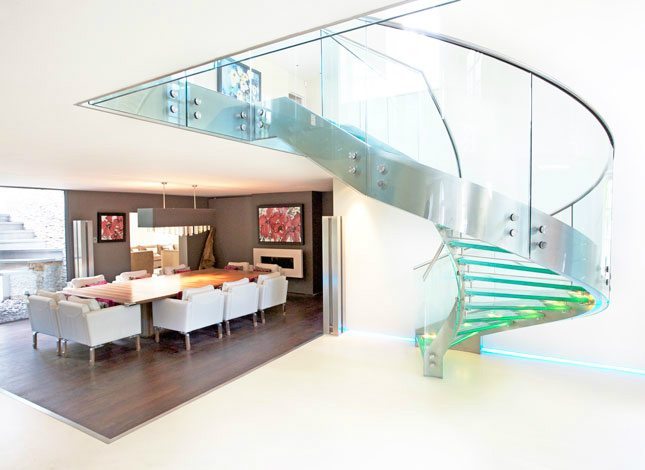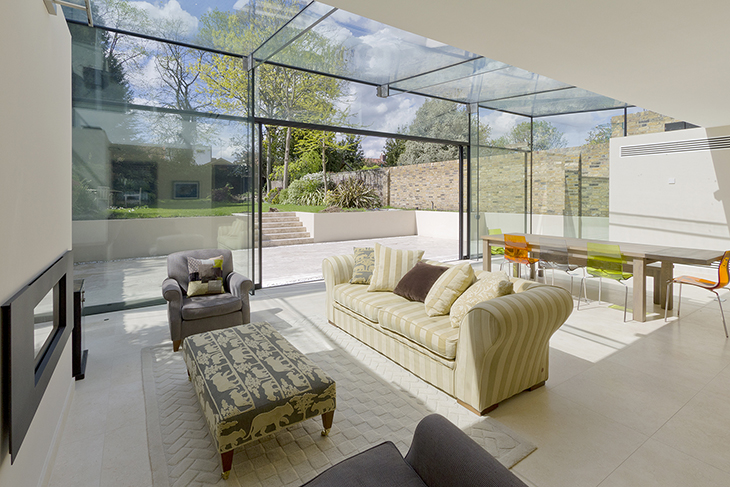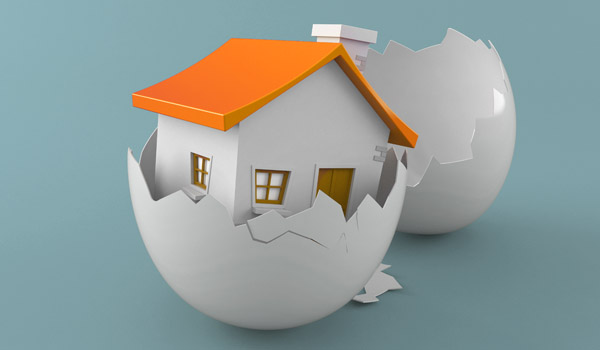March 31, 2021 / By admin
Hatching New Trends; How Covid-19 has influenced architectural trends.
In an attempt to look forward we are going to put our architectural ‘necks on the line’ and commit our predictions for 2021, and beyond, to paper (or more specifically to screen).
Most of the predictions we are stating seem destined to have happened anyway, but Covid-19 has been a catalyst, forcing rapid advances in technology, society to adapt and speeding up changes in the built environment. The obvious change for a large number of people is, of course, working from home, or WFH, as we all now know it.
Our first prediction is not too much of a stretch, we predict that a new model of hybrid working will be adopted by many companies across industries and regions, thereby shaping home design and the commercial property market.
Of the reports on how people are feeling about the potential return to the office, there are a range of opinions. However, it seems the majority of people who have experienced WFH are not keen to return to the same pre-Covid, rigid time-determined office life, preferring the option of some days in the office combined with some at home – a hybrid working model. Likewise, many companies have realised the cost savings and lifestyle benefits of not having everyone in the office 5 days a week.
Our personal experience at RRA was that the initial period of WFH was not too difficult; projects were known, everyone had a laptop to work on and there was an element of novelty. In fact, as a company we adapted easily, productivity was not initially affected. However, this changed a few months in. The workflow became harder to organise without the easy communication within the office, junior members were not having the face-to-face mentoring input needed and keeping projects on track was more of a challenge. When the first lockdown ended, we offered our team the choice of how to work and put measures in place so people could come into the office when needed, with a system to ensure not too many people were in the space at one time. This worked well with the team organising office time efficiently to see the people needed on a limited number of days, to facilitate WFH for the rest of the time.
After some months of this we have found a balance and, as a practice we intend to continue to offer hybrid working to our team. Afterall, there are undeniable lifestyle benefits to being at home for a day or two during the week, whether it is to wait in for a parcel delivery or carrying out household tasks in the background, so freeing up your weekend.
This shift in working custom will take time to settle as companies find the ratios that work for them. Of course, many companies will try to revert to the previous set up, but as new recruits opt to work for companies with more flexible options this will organically evolve hybrid working to become the ‘new normal’.
Whilst this may not seem like it is architecturally related, the shift in working location will have several effects. Initially considered a temporary fix, the home office set up of a laptop balanced on the arm of the sofa or the end of the kitchen surface just won’t cut it for permanent hybrid working. WFH will ideally be from a purpose made home office environment. And not just a desk in the spare room, the widespread use of video conferencing will add a new dimension to the design of the home office with the specifying of high-speed internet, soundproofing, video lighting and appropriate backgrounds.
In the 1990s Open Plan Living became a ‘thing’ and with its communal spaces, integrated family and entertaining areas and open spacious ambiance it revolutionised residential design. Since then, the style has evolved and refined itself into Broken Plan Living where the benefit of open plan are combined with zoning and screening to introduce areas of cosiness and privacy where needed. The style facilitates modern living and we see this continuing for a long time, although the need for a quiet home office area will necessitate at least one separated living space. We have already seen this happening within RRA, with some of our current residential projects revising their original brief to include a designated home office in their layout.

In contrast to homes including more offices in their layouts, we have seen a move away from this in our commercial clients. Larger companies are considering whether they really need expansive areas of individual office desking or whether desk sharing can be a real, and safe, option going forward. One such client of ours is exploring whether a large gym area for the team would be a better use of space previously allocated to desks.
(Desk sharing in contrast to ‘hot desking’ has a small number, usually just two, people sharing a single office desk with designated storage for personal items. ‘Hot desking’ is a single desk used by many people and which usually has no personal possessions left in the space.)
Along with hybrid working comes a reduction in car use for commuting, bringing into question the need for car ownership. The bigger cities are already experiencing this as more people opt to hire cars only when needed. Over time, lifestyles will adapt and with less cars are in private ownership, there will be reduced traffic, less need for parking areas and, ultimately, a cleaner, more environmentally friendly, cost-effective transport option. This is already influencing house design as planning policies have changed and councils are no longer demanding parking spaces for all inner city housing developments.
This shift in social infrastructure leads into our second prediction, which is the decline and rebirth of the town centres.
Ok, so predicting a decline of town centres as retail hubs is a bit like predicting the outcome of a match in the 89th minute – reporting the death of the high street was rife long before Covid hammered in the nails on that coffin. It was already difficult for physical shops, with their overheads, to compete with the online experience. As technology offered increasingly better, faster, more convenient ways to shop online, the days of the high street were numbered. Covid and the lockdowns brought a swift and decisive conclusion to the dwindling of many businesses. Even in the affluent towns rows of boarded up shops now dominate the scene.
However, we don’t think that means the future is bleak – far from it. During the transition, of course, there will be a period of difficulty and turbulence for the centres, as they become more empty and whilst the buildings are converted. There are numerous opportunities for these multi-level buildings to be repurposed as mixed-use developments. The upper floors can be transformed into fabulous residential units with great views, whilst smaller retail units can remain at street level.
This would have several effects:
- People living in the centres will provide footfall for the businesses.
- The lower overheads of smaller retail units will be more attractive to shops, bars and restaurants.
- The lower overheads will also be a more achievable option for independent businesses thereby encouraging more retail variation in the towns.
- The convenience of living in the centre will require less travel and provide limited parking, so reducing the instances of car ownership.
- Apartments are naturally targeted towards a younger demographic, young professionals without the requirements of a family home or family car.
This evolution leans towards the town centres becoming more vibrant and diverse, and safer, with a variety of businesses operating round the clock rather than the current culture of nine-to-five retail and an evening of bars and nightclubs.
So, our prediction is that whilst Covid has no doubt hugely impacted the retail landscape, this is likely to speed up the transition to a new and exciting culture, making our town centres into social hubs.
Our third prediction is that people will demand more well-being and lifestyle happiness from their homes.
Whilst the link between environment and mood is hardly new, lockdown both intensified the impact living spaces had on individual mood and mental health, while also making it a shared experience across society, bringing the subject into sharp focus. People have questioned the importance of their career, their work life balance and their family values.
As a consequence, people have made life altering decisions. In our own business we have had enquiries from clients who, because of Covid and the ability to WFH, are moving away from high pressure jobs in London to the countryside. Also, several people who are moving to be nearer to relatives, or, who wish to remodel their homes to accommodate extended family.
Even social housing providers are changing their specifications. In recent talks we had with a housing association, they noted that any new apartments must now have some outdoor space, even if just a balcony, for the well-being of the inhabitants.

We predict the large glazing systems which connect the interior of the home to outside space, will become even more popular, as the importance of outdoor space is been recognised. (To read more on this see our article ‘Clearly Here To Stay’.)
Along with this increased appreciation of the immediate home space, is the continued pattern of people becoming more aware of the wider environment and our need to protect this for future generations. The incredible drop in levels of pollution during the lockdown across multiple countries, was a visible indication of the extent of pollution from daily life – and, also, of how quickly the environment can recover if enough people adjust their lifestyles. This powerful message came at a time when society was in a contemplative state, when the ins and outs of the daily grind had been interrupted by a worldwide event which demanded that society stop and pay attention. Social media was full of positive images of wildlife returning to less polluted rivers and the skies over industrial areas clearing for the first time in centuries. Potentially the pandemic did more to promote the need for social change to support environmental concerns than any campaign could have done.
One area evidencing the desire to ‘go green’ is the electric vehicle industry. Already booming pre-Covid this industry has seen a monumental surge in uptake over the past year, despite the economy slowing elsewhere, the EV sector grew by 66% in 2020 compared to the previous year according to Next Green Car. As architects we have been suggesting to our clients for some time, to future proof their houses, by installing the cabling for EV charge points. This is now becoming the standard as more people make the change.
Eco-friendly home features such as ground-source heat pumps, PV panels, grey water recycling, etc. have been requested by clients for some years, although the expense of including such things often resulted in them not being achievable. With society witnessing the effect of reduced pollution we expect the requests for eco-friendly additions to move higher on the ‘wish list’ and for the financial investment to be more palatable.
The ethos at RRA, when designing a new build scheme, has, for many years, been to include as many eco-friendly features which have no additional costs as possible. This would include design decisions such as proper assessment of a site to ascertain sun paths, thereby maximising solar gain and minimising heat loss for energy efficiency. The materials we propose are often low maintenance and with a focus on gradual maturing over the life of the building to enhance the aesthetic rather than to require replacing.
In addition, where clients would like eco-friendly features but do not have the budget to include them at the offset, we will often propose a scheme with the necessary connections and areas designated. This allows the features to be easily added at a later date when finances allow. This is one of the many benefits of working with experienced architects who understand the requirements of the environment and the clients budget.
The expense to retrofit environmentally friendly products often far outweighs the benefits. This is one area which is still lacking in good quality, affordable options. Many companies focus on developing fantastic new technologies for new buildings, but little is being explored to reuse existing buildings in an environmentally friendly way. Which is rather ironic given that repurposing buildings is far more eco-friendly than the carbon footprint required to build new ones. Therefore, we also predict that the market for effective and affordable products which can be retro-fitted to existing buildings will boom, driving forward this industry. In fact, the industry of eco-design throughout all areas will boom, as we aim for a carbon neutral future.
This is a huge topic and there is so much more to say, but perhaps for now, we should wait to see if any of our predictions come to fruition.
